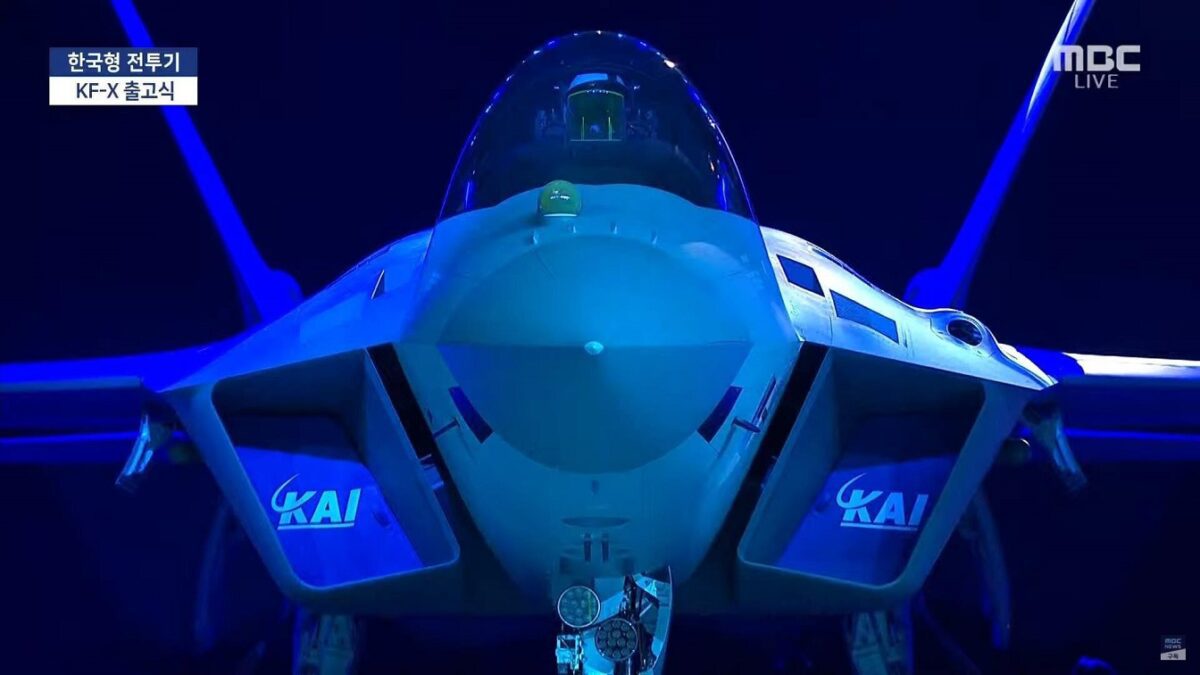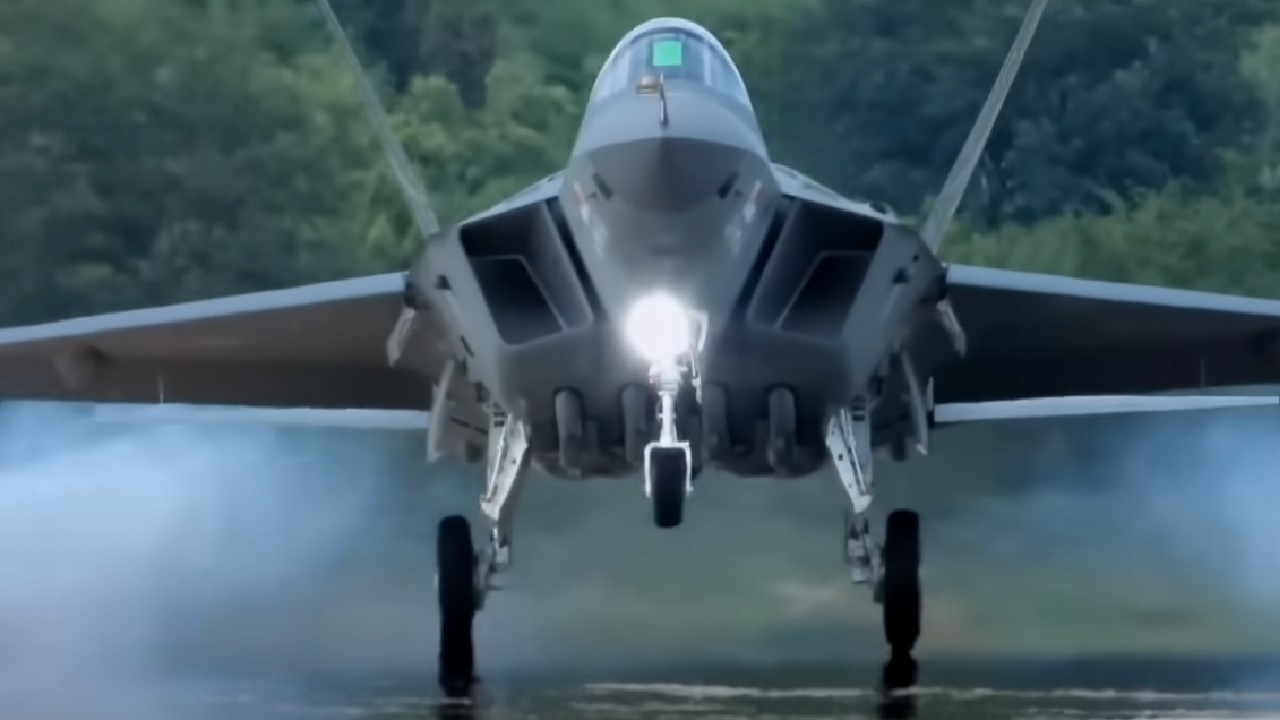South Korea unveiled its 4.5-generation, domestically produced KF-21 fighter jet, a somewhat stealthy-looking, sleek supersonic fighter jet expected to become operational in 2026.
The external configuration bears a striking resemblance to the U.S. F-35 with its blended wing-fuselage and embedded engine inlets, yet there is a distinct and widely recognized difference between the two aircraft. The Korean KF-21 fighter does not have an internal weapons bay like stealthy 5th-generation aircraft, however, it is heavily armed with as many as 10 external hardpoints. This apparent limitation does not mean the Korean fighter can’t one day evolve into a 5th-generation plane, as numerous reports cite developers explaining that an internal weapons bay may indeed be built into the KF-21 in the coming years.
Korea’s Airborne Achievement
The aircraft is heralded as a massive achievement for Korea’s emerging aviation industry, as it incorporates a wide sphere of advanced technologies. The project is part of a collaborative effort between Indonesia and South Korea.
Following the 2021 unveiling of the aircraft, Korean leaders expressed enthusiasm in international reports.
“A new era of independent defense has begun, and it’s a historic milestone in the development of the [South Korean] aviation industry,” President Moon Jae-in said at the time of the KF-21 unveiling. The KF-21 is nicknamed Boramae, or “young hawk trained for hunting.”
With a maximum take-off weight of 55,000 pounds, the Korean jet is armed with a full complement of air-to-air and air-to-ground weapons that include the AIM-9X Sidewinder and AIM-120 along with Harpoons and anti-ship missiles. The aircraft also flies with a full complement of bombs, providing the one or two man crews with a wide range of attack options.
South Korea is also of course an F-35 partner, so it will be interesting to see if the KF-21 is engineered to network with the F-35. That would make sense given that the South Koreans plan to have 120 of the aircraft in service by 2032.

KF-21 Fighter. Image Credit: Screenshot.
Also of significance, the KF-21 is being built with a handful of technologies of great importance to U.S. fighter jets like the F-35.
That includes the Active Electronically Scanned Array (AESA) radar and Infra-Red Search and Track (IRST) targeting systems.
The AESA radar, which is also on the F-35, can track multiple targets at one time across a wider detection envelope, and IRST is a next-generation targeting system capable of operating with success in a high-threat electronic warfare environment.
Kris Osborn is the Military Affairs Editor of 19FortyFive and President of Warrior Maven – Center for Military Modernization. Osborn previously served at the Pentagon as a Highly Qualified Expert with the Office of the Assistant Secretary of the Army—Acquisition, Logistics & Technology. Osborn has also worked as an anchor and on-air military specialist at national TV networks. He has appeared as a guest military expert on Fox News, MSNBC, The Military Channel, and The History Channel. He also has a Masters Degree in Comparative Literature from Columbia University.

